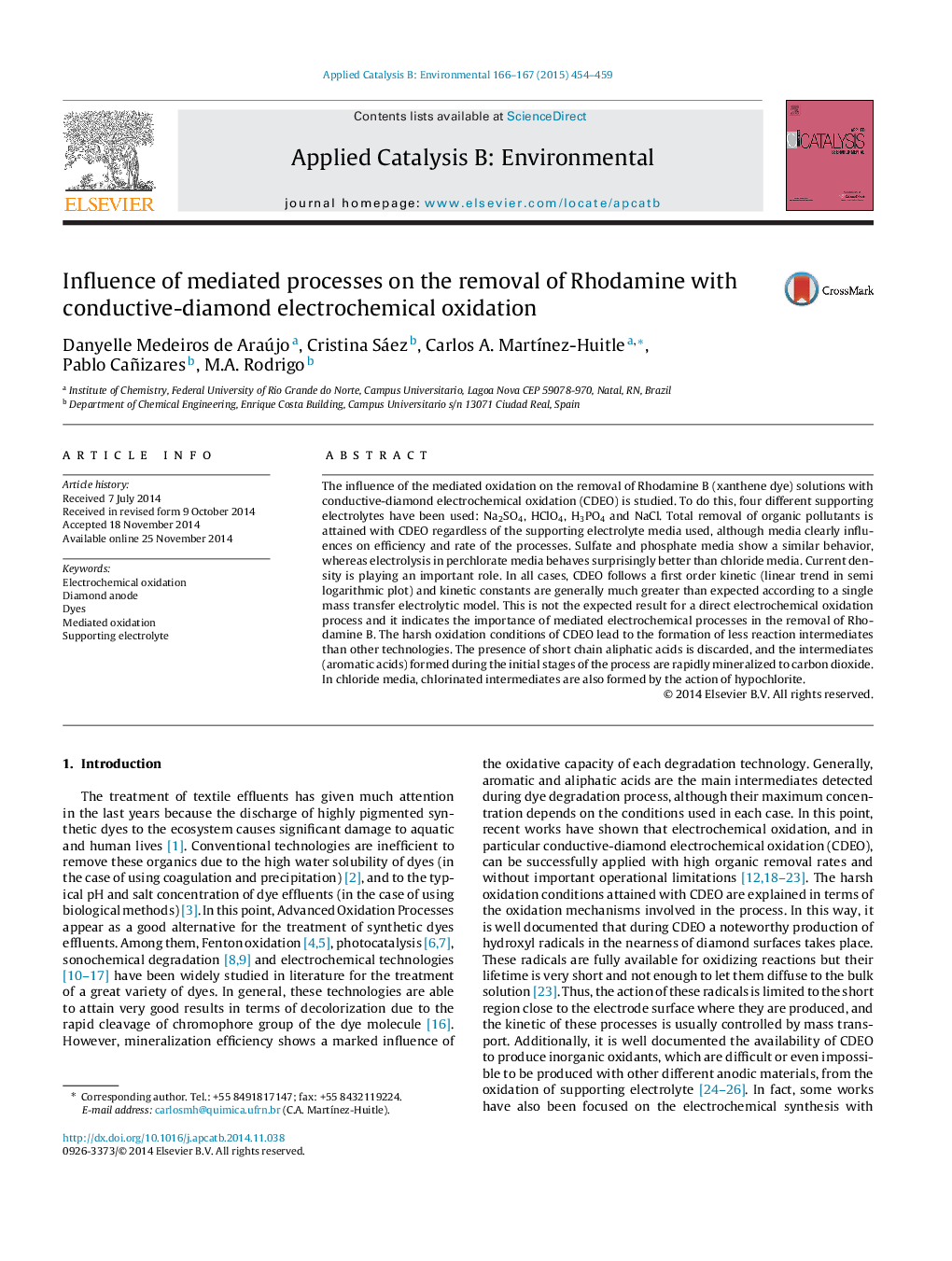| Article ID | Journal | Published Year | Pages | File Type |
|---|---|---|---|---|
| 45739 | Applied Catalysis B: Environmental | 2015 | 6 Pages |
•Electrochemical degradation rate is decided by supporting electrolyte.•HClO4 as electrolyte favors electrochemical combustion by OH radicals.•Persulfates and peroxodiphosphates promote efficient elimination of the pollutant.•NaCl as supporting electrolyte favors the production of organochlorinated compounds.
The influence of the mediated oxidation on the removal of Rhodamine B (xanthene dye) solutions with conductive-diamond electrochemical oxidation (CDEO) is studied. To do this, four different supporting electrolytes have been used: Na2SO4, HClO4, H3PO4 and NaCl. Total removal of organic pollutants is attained with CDEO regardless of the supporting electrolyte media used, although media clearly influences on efficiency and rate of the processes. Sulfate and phosphate media show a similar behavior, whereas electrolysis in perchlorate media behaves surprisingly better than chloride media. Current density is playing an important role. In all cases, CDEO follows a first order kinetic (linear trend in semi logarithmic plot) and kinetic constants are generally much greater than expected according to a single mass transfer electrolytic model. This is not the expected result for a direct electrochemical oxidation process and it indicates the importance of mediated electrochemical processes in the removal of Rhodamine B. The harsh oxidation conditions of CDEO lead to the formation of less reaction intermediates than other technologies. The presence of short chain aliphatic acids is discarded, and the intermediates (aromatic acids) formed during the initial stages of the process are rapidly mineralized to carbon dioxide. In chloride media, chlorinated intermediates are also formed by the action of hypochlorite.
Graphical abstractFigure optionsDownload full-size imageDownload as PowerPoint slide
